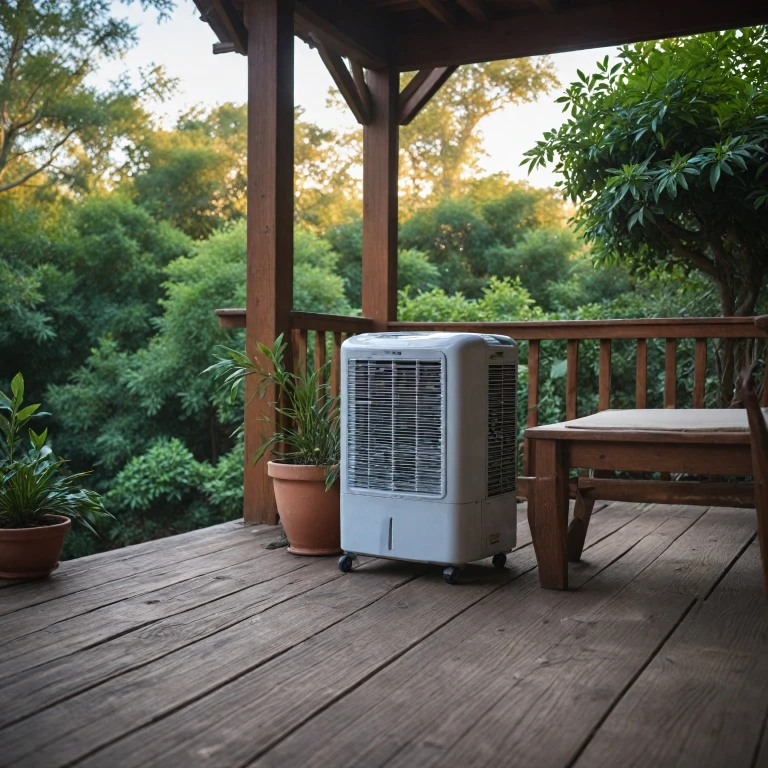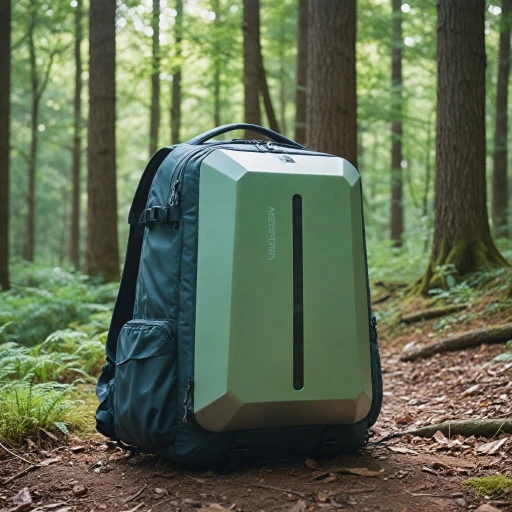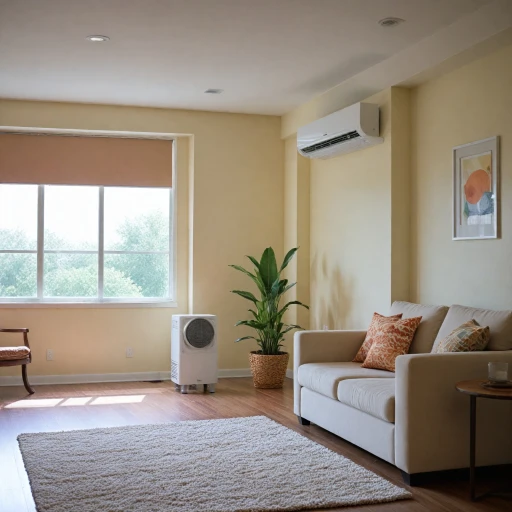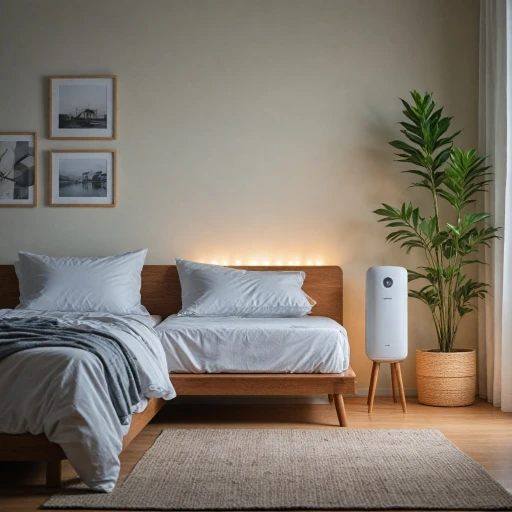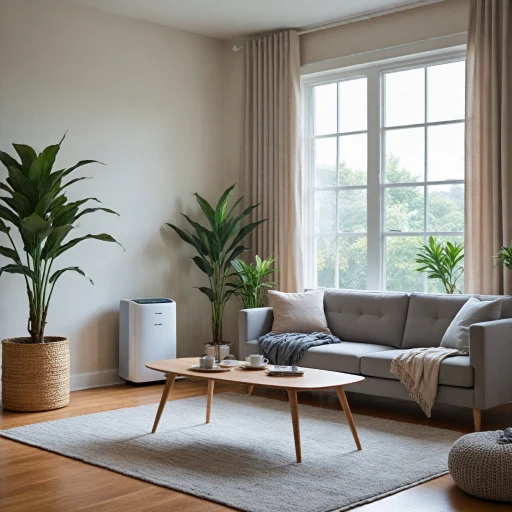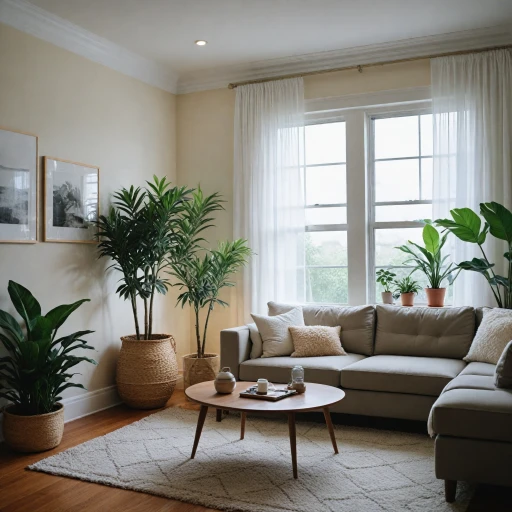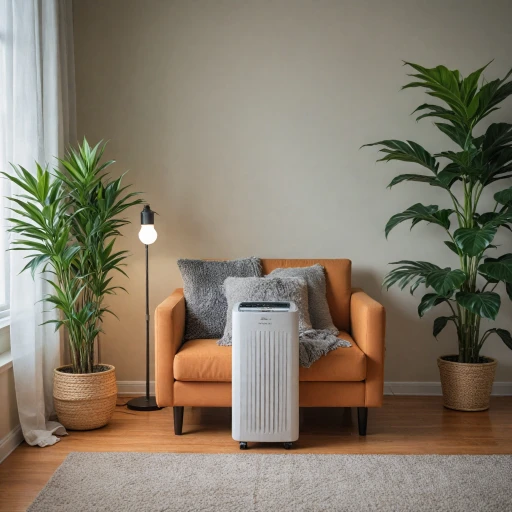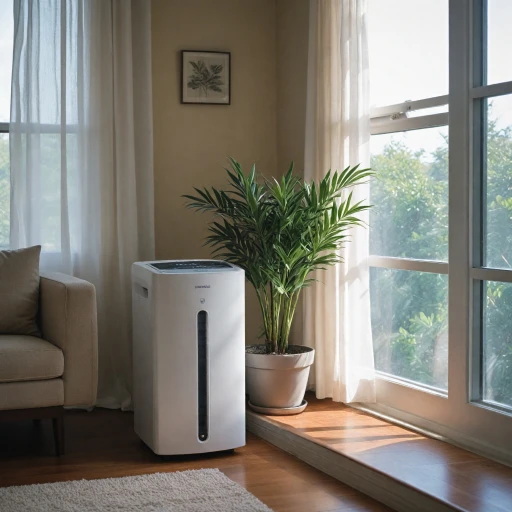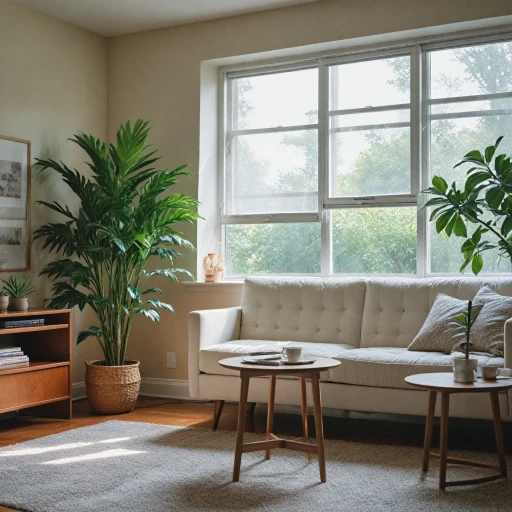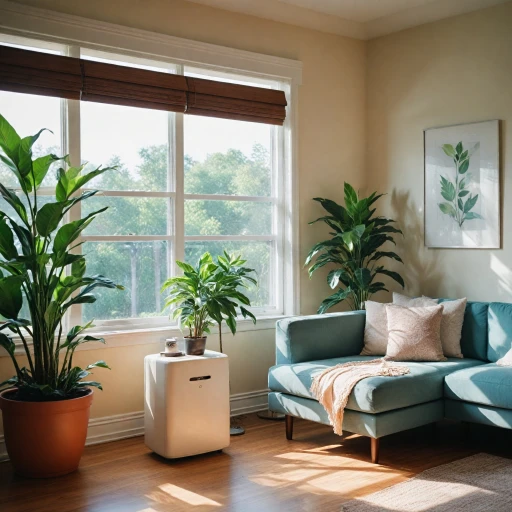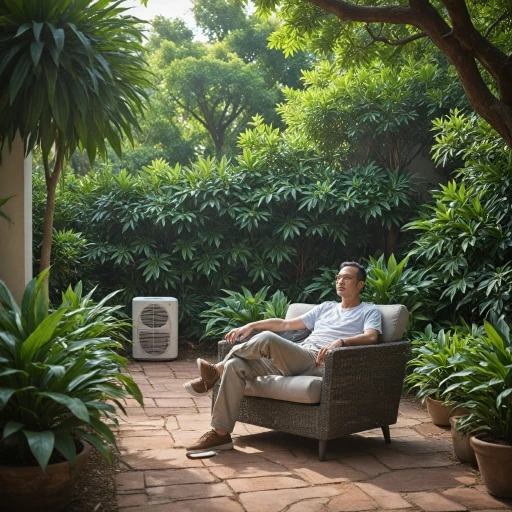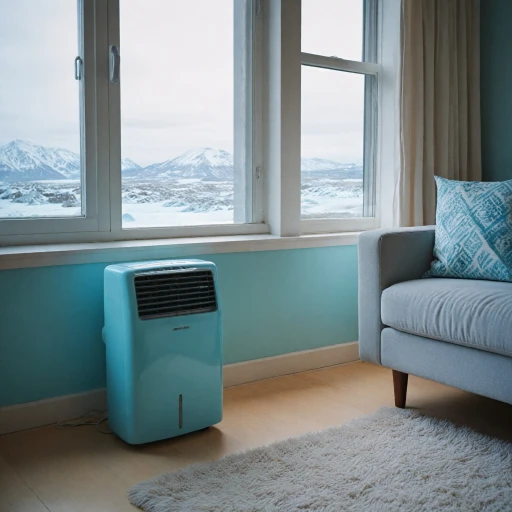
Understanding Portable Outdoor AC Units
What Makes Portable Outdoor AC Units Unique?
Portable outdoor air conditioners are gaining popularity for their versatility and convenience. Unlike traditional air conditioning systems, these units do not require permanent installation, making them an ideal choice for a variety of settings, from patios and decks to camping trips.
The key feature of these conditioners is their portability. Many models are designed with handles and wheels, making it easy to move them from one location to another. This mobility offers a great advantage for cooling specific areas that fixed units cannot easily reach.
Cooling Capacities and Performance
Portable AC units come in a range of BTU ratings, which determine their cooling capacity. Higher BTU units can cool larger spaces and are suitable for outdoor areas that receive direct sunlight, while lower BTU models are great for smaller or shaded spaces.
Some popular models include the Black Decker and Midea Duo, which offer features such as dual hose and remote control functionalities. These features help enhance the efficiency of the cooling process and provide users with more control over their environment.
Versatile in Design and Functionality
In addition to cooling, many portable units offer additional functionalities, such as heating modes, which make them useful year-round. The hose design also plays a crucial role, with single hose and dual hose options available depending on the user's preference and the level of ventilation required.
For those seeking multidimensional air solution systems, exploring the versatility of such units can provide deeper insights into their multiple appliance functionalities.
Key Features to Look For
Essential Features to Consider When Buying
Selecting the right portable outdoor AC unit can make a significant difference in your cooling experience. Here are some critical features to keep an eye on:- BTU Rating: The BTU rating determines the cooling capacity of your air conditioner. Units with a higher BTU rating can cool larger spaces effectively. Assess your room size and choose a unit that aligns with your needs for optimal performance.
- Cooling Settings and Modes: Look for models that provide a range of options such as multiple cooling settings, heating mode, or fan-only mode, which can enhance comfort across different weather conditions.
- Ease of Use: Features such as remote control and user-friendly interfaces can significantly enhance the user experience. Accessing settings without manual adjustment increases convenience, especially during busy hours.
- Portability and Design: Being portable isn't just about having wheels. Compact models, like the Midea Duo, offer easy mobility without sacrificing power. Additionally, consider the design—does it fit your space and style?
- Noise Levels: Check the decibel rating if quiet operation is a priority for you. Some portable air conditioners can operate smoothly with minimal disruption, ensuring comfort without noise disturbance.
- Energy Efficiency: Units that mark energy efficiency as a top priority help in reducing electricity bills. Check for energy-efficient models, such as those with an energy-saving mode or dual hose design.
- Ventilation Options: Decide between single hose and dual hose designs. Newer models like the Black Decker embrace a dual hose system for better air quality and cooling efficiency.
Advantages of Portable Outdoor AC Units
Uncovering the Advantages: Your Portable Cooling Ally
When the heat becomes unbearable, the allure of a portable outdoor AC unit is undeniable. These units come packed with a myriad of benefits, tailored for those in desperate need of a breeze-mark refreshment.- Flexibility and Convenience: Unlike traditional air conditioners, portable units don’t require permanent installation. You can easily move a portable air conditioner from room to room, ensuring each space gets the cooling it demands. This unmatched portability makes it a versatile investment for both home and outdoor use.
- Variety in Models: With a broad range of conditioners available, from the sleek Midea Duo with its dual hose design to the robust Black Decker, there’s a model to fit every need and price point. Some units even offer a heating mode for year-round use, transforming from a cooling power to a winter warmer instantly.
- Cost-Effective Cooling: These units can often be more budget-friendly than installing a central system or using multiple window units. The single hose units especially stand out for their economical use, balancing cooling capacity and power efficiently.
- Modern Features: The inclusion of remote controls and programmable timers in the best portable air conditioners adds a layer of convenience, allowing users to manage cooling settings without leaving their seat. This is especially practical for outdoor events where direct access to the unit might be limited.
- Ease of Installation: Equipped with a window kit, setting up these conditioners is straightforward, saving on professional installation fees and time. For those concerned with delivery costs, many suppliers offer free shipping to sweeten the deal.
Challenges and Limitations
Potential Drawbacks and Things to Consider
While portable air conditioners offer significant flexibility and convenience, there are certain challenges and limitations you should be aware of before investing in one. Understanding these aspects can help you make a more informed decision that aligns with your specific cooling needs and constraints.
- Cooling Capacity vs. Space Size: One of the primary concerns is ensuring the chosen portable unit has sufficient BTU output for the size of your room or outdoor space. Smaller models may struggle in larger areas, while high-BTU units might be overkill for a small space. A top pick may not always be the best option for your requirements if the cooling capacity doesn’t match your space.
- Noise Levels: Compared to traditional air conditioners, some portable cooling solutions, including models like the Black Decker, can be noisier. Check for those equipped with remote controls to easily adjust settings from afar, potentially lowering the power output to decrease noise.
- Hose Design Complexity: Many portable options, such as the dual hose models, provide efficient cooling but can be cumbersome due to their hose and window installation requirements. Ensure you have a suitable window kit and can manage this setup for easy portability and efficient performance.
- Energy Consumption: Portable ACs can consume significant energy, especially when used for extended hours. Look for units with energy-efficient features or battery-powered systems to mitigate high electricity bills.
- Price vs. Features: The price of portable coolers can vary widely. Features such as a heating mode or advanced controls like a remote might justify higher costs. However, it’s crucial to assess whether these features align with your usage patterns.
In summary, while portable air conditioners offer significant mobility benefits, it's essential to weigh these against potential drawbacks. Considering factors like space size, noise, hose design, energy use, and pricing can help you choose the right model that’s truly worth the investment. It's all about striking the balance to ensure your cooling needs are met effectively.
Comparing Portable Outdoor AC Units to Other Cooling Solutions
Evaluating Cooling Solutions: Portable Outdoor AC Units vs. Alternatives
When seeking the ideal air conditioning solution, portable outdoor AC units often come to mind. However, it's essential to compare these with other available cooling methods to make an informed decision. Here's a breakdown of how portable units stack up against other systems:- Space and Placement: Portable outdoor AC units, like the popular model Midea Duo, offer the flexibility to move them around. This is in contrast to fixed installations like window units, which require a specific setup spot and often permanent modifications to the window frame.
- Cooling Capacity: The cooling capacity of portable ACs is measured in BTUs (British Thermal Units). Depending on the model, a well-selected portable air conditioner can cool a room effectively for several hours. In contrast, central air systems, while powerful, require more power and are less selective about individual room cooling.
- Installation: Portable ACs generally come with a window kit for easy setup, especially models with a single or dual hose design. This makes them less intrusive and easier to install compared to traditional air conditioners that might require professional installation.
- Cost: In terms of price, portable units are generally more affordable. Many models come with features like remote control or battery operation and boast free shipping, making them a cost-effective solution for cooling needs without the long-term commitment.
- Versatility: Some portable units come equipped with additional heating modes. This dual-functionality offers year-round comfort, unlike fixed cooling-only solutions.
- Portability: The primary advantage of portable air conditioners, such as those made by Midea or Black Decker, is their mobility. You can move them room to room as needed, which cannot be said of window or central air systems.
Tips for Optimal Use and Maintenance
Optimizing Usage and Maintenance for Portable Outdoor AC Units
Using a portable outdoor AC unit effectively requires understanding its features and limits. These air conditioners excel in versatility, offering cooling relief in diverse settings. To maximize their performance and longevity, consider these essential tips:
- Placement: Ensure the unit is in a position where the cool air can circulate effectively. Avoid obstruction by furniture or walls for best results.
- BTU Rating: Match the cooling capacity to the size of the space. A unit with a higher BTU rating, like the Midea Duo, will cool a larger area more efficiently.
- Hose Management: Use dual hose designs to optimize air intake and exhaust. The right hose setup can enhance cooling effectiveness.
- Remote Control Usage: Many models come with a remote, making it easy to adjust settings without leaving your seat. Familiarize yourself with its functions for convenience.
- Battery Backup: For portable use, ensure the battery is charged or have spare batteries on hand. This keeps the unit running without interruption.
- Regular Maintenance: Clean the air filters and empty the water tanks regularly to maintain optimal performance and prevent mold growth.
- Window Kit Installation: Use the provided kit to seal windows properly during setup. A tight seal prevents heat exchange, making your AC unit more efficient.
- Operating Hours: Try not to run the unit continuously for extended hours to prevent overworking the machine. Scheduled rest periods help prolong its life and efficiency.
Incorporating these practices not only enhances the cooling experience but also ensures that your portable air conditioner remains a cost-effective and reliable cooling solution throughout its use. Remember, considering the unit's limitations and maintaining it well can prevent common issues, keeping the breeze and comfort flowing effortlessly over time.
